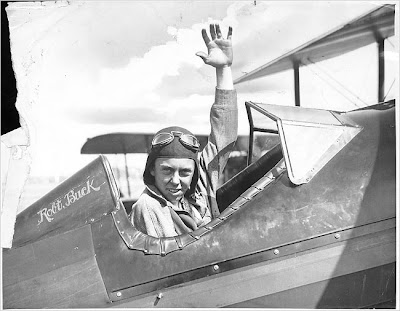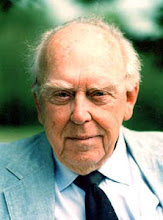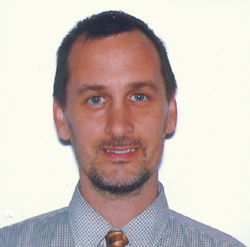It is with great sorrow that I announce to you the passing of Robert N. Buck on Saturday April 14, 2007. He died as a result of injuries sustained from a fall at his home in Vermont. I first spoke with him on the telephone during March, 2006, shortly after putting this page online. We planned to meet, as I have done with all living signers of the Davis-Monthan Register. I procrastinated last summer about going to visit with him. Lesson learned.
On this website we have three first-person accounts of flights to the old Davis-Monthan Airfield. Bobbi Trout passed away in 2003. To my knowledge there are now just two surviving signers of the Register, Wm. T. Piper, Jr. and John Miller. If you know of any others, please let me know, Now!
---o0o---
Robert N. Buck started flying early. He soloed on March 15th and received his pilot's license on April 10, 1930 at age 16.
A month later, the New York Times (5/11/30) headlined, "Youth Takes an Older Generation Skylarking", wherein it reported a 20 minute flight during which pilot Buck took his 73 year-old grandmother aloft over Westfield, NJ for her first airplane flight. She reported that she enjoyed the flight greatly and would readily make another. Image, above, is of Bob and his grandmother, Mrs. Elizabeth Bellingrath, from the New York Times.
In the fall of 1930, he attempted to break the 2,510 mile Newark to Los Angeles junior transcontinental record. The record stood at 29 hours and 40 minutes. He flew the same airplane, NC549K, that he later brought to Tucson.

After a couple of delays due to weather, he left New Jersey on September 29th and refueled at Martins Ferry and Columbus, OH, and at Indianapolis and St. Louis, MO. He had been flying for eight months and had accumulated 150 solo hours. He carried six chocolate bars and an old army canteen of water.
When he reached Wichita, KS he was an hour and 15 minutes ahead of record time. Then things fell apart. He had an oil pressure problem upon departure from Wichita, and returned there for repairs. He departed again, and headwinds delayed his arrival at Amarillo, TX by about an hour.
He departed Amarillo on October 3rd, only to have engine problems about 70 miles west. He landed at Glenrio, NM where it was determined that he needed to replace an engine cylinder. After repairs, he headed west again and, on October 7th, completed his westbound flight to California in 28 hours elapsed flying time, an hour and 40 minutes faster than the old record.
He then turned around and captured the west-east record by flying from Los Angeles to Newark, NJ in 23 hours 47 minutes elapsed flight time. He landed back east on October 19th. These records earned him some notoriety. Within a year after his flights, he published a book, "Coast to Coast on Wings" with Putnam & Sons, and dedicated it to his flight instructor.
On February 15, 1931 at 3AM he left Newark headed for Havana, Cuba. After stops in Raleigh, NC and Jacksonville, FL, he landed in Miami on the same evening at 6:14PM (a long day, even by today's small plane flying standards). He departed Miami on the 16th at 2:53PM and reached Havana at 5:25 the same afternoon. His flying time was 14 hours and 17 minutes, a record for juniors.
He intended to return to New Jersey in one day, but was thwarted in that attempt because, on February 22nd when he arrived at the airport bright and early, there was no one around. He waited until 11AM for someone to arrive and unlock the hangar where his airplane (NC549K) was stored.
He finally flew to Miami, spent an overnight there, and flew to Newark the next day via Jacksonville, Columbia, SC, and Camden, NJ. He did not follow the same route during his return. His flight time north was 13 hours 5 minutes, bettering his southbound time by over an hour. He had flown all day without eating or drinking. He was 17 years old and had accumulated about 330 total flight hours.
Less than a week later, on February 28, 1931, he earned his automobile driver's license. The Motor Vehicle Commissioner told him he hoped his road record would be as good as his flying record (Newark Star-Eagle, 2/18/31).
On March 22, barely a year since he had soloed, pilot Buck and his parents visited Washington, DC by rail for a meeting with President Hoover at the White House. Buck presented the President with an 18-inch cigar he carried from Cuba.
Now comes pilot Buck to Tucson. Bob Buck landed at Tucson three times, on August 14 and 22, 1932 and on October 8, 1933. He was solo each time flying Pitcairn PA-6 NC549K. His airplane, a Sport Mailwing, was named "The Yankee Clipper".
His 1932 visits to Tucson were made in conjunction with a flight record attempt to Mexico City. According to contemporary newspaper accounts, he departed Newark, NJ at 3:05 AM on August 9th on a 2,250 mile route to Mexico City.
His first scheduled stop was Richmond, VA. He landed at Richmond at 6 AM and departed for Spartanburg, SC at 6:25. Later on the 9th he made refueling stops at Atlanta, GA and Montgomery, AL, then flew to New Orleans for an overnight.
Next day he flew to Houston and then Brownsville, TX. On the 11th he departed for Tampico and Mexico City. His total flight time was 24 hours and 5 minutes.
After his flight to Mexico, he returned to the U.S. north through El Paso and Tucson on his way to Los Angeles, CA. He set another record by flying that route in 20 hours.
---o0o---
One thing that comes through to me from the reading I have done to prepare this page, is the nurturing support Robert Buck received from his parents and family. His mother, father and grandmother had no concerns (that they shared openly) flying with him. Indeed, Robert flew his parents on a vacation tour to Boston in June 1931. Likewise, he flew his aunt, a character actor, on a tour of New England in July 1931.
They cheered his departures and welcomed his returns to New Jersey. They accompanied him to some of the speaking engagements that followed his notoriety. Apropos this support, his mother is cited in the Newark Star-Eagle, May 15, 1931, as, "...an ardent aviation enthusiast and believes Bob will develop into one of the greatest flyers in America." There's a lesson for us here.
Source: Creekhouse Enterprises; Davis Monthan Aviation Field Register




 Aviation weather and safety consultant/author and retired TWA captain Robert N. Buck, 93, recently passed away in Berlin, Vt. He started flying at age 15 and set a New York to Los Angeles speed record before reaching his 16th birthday. By his 20th birthday, he broke an altitude record for light airplanes and became the first person to take aerial photographs of ancient ruins of the Yucatán. Buck had flown the Atlantic more than 2,000 times during his airline career with TWA. He was also a consultant to four FAA Administrators and airlines on many aspects of aviation safety, and was the author of "The Art of Flying," "Flying Know-How" and "Weather Flying." Buck continued to fly a Schleicher ASW-20 sailplane well into his 80s. Pilots revere his books because they are easy to read and engaging, even though they cover complex subjects. In "Weather Flying," Buck succinctly starts, "Weather bothers our flying in a few basic ways. It prevents us from seeing; it bounces us around to the extent that it may be difficult to keep the airplane under control and in one piece; and ice, wind, or large temperature variations may reduce the airplane's performance to a serious degree. That's what weather does…we fight weather in order to see, to keep our aircraft under control, and to get the best and safest performance from an aircraft. The question is, 'How?'"
Aviation weather and safety consultant/author and retired TWA captain Robert N. Buck, 93, recently passed away in Berlin, Vt. He started flying at age 15 and set a New York to Los Angeles speed record before reaching his 16th birthday. By his 20th birthday, he broke an altitude record for light airplanes and became the first person to take aerial photographs of ancient ruins of the Yucatán. Buck had flown the Atlantic more than 2,000 times during his airline career with TWA. He was also a consultant to four FAA Administrators and airlines on many aspects of aviation safety, and was the author of "The Art of Flying," "Flying Know-How" and "Weather Flying." Buck continued to fly a Schleicher ASW-20 sailplane well into his 80s. Pilots revere his books because they are easy to read and engaging, even though they cover complex subjects. In "Weather Flying," Buck succinctly starts, "Weather bothers our flying in a few basic ways. It prevents us from seeing; it bounces us around to the extent that it may be difficult to keep the airplane under control and in one piece; and ice, wind, or large temperature variations may reduce the airplane's performance to a serious degree. That's what weather does…we fight weather in order to see, to keep our aircraft under control, and to get the best and safest performance from an aircraft. The question is, 'How?'"






